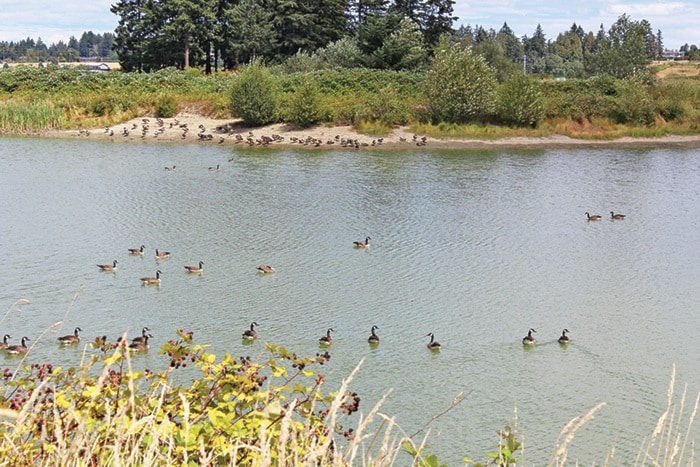Central Saanich Mayor Ryan Windsor says an attainable goal for the number of non-migratory geese in the region should be in the low thousands.
“That range is based on estimates of 6,000 and 9,000, and that’s specifically of the non-migratory,” he said. “I am absolutely committed to protecting the migratory geese that are native to Vancouver Island. I don’t want to see a single one of them harmed.”
He said it’s important that people make a distinction between the non-migratory and the migratory geese and the status must change on the ones that here year-round.
Last year, the CRD only killed around 45 geese. Last week, the CRD board agreed to continue participation in a working group, with the purpose of population reduction, and Windsor said a cull may be part of that like the pilot program was last year.
CRD participation will continue to Dec. 31, 2017.
He said if there is any financial implication, the finance committee will deliberate on that and bring it back to the board. The group hasn’t discussed cull numbers, as Windsor said there would need to be a design of what is possible.
“I think we’ve got a lot of work to do to make things possible. There’s also other avenues that are being explored; regulatory changes, modifications to crop protection, permit numbers, that kind of thing,” he said. “Those are yet unknown questions but the working group, I think among others, will continue to inform that, so this is more of an incremental step but it’s an important one.”
To provide interim relief of the goose problem, Peter Rashleigh and his fellow engineering team members came out with a laser prototype to scare away geese from farm fields, and it worked.
The device is located on Rashleigh’s home farm, Saanichton Farm, and his father, Bryce, said its worked well in the summer months to scare the geese off his fields.
They’ve stored it away for the winter months, but have made some adjustments to it.
“We adjusted the time of when it goes off. Initially it was sort of set to go off every hour, but then we realized there’s more of a rush at certain times of the day and first thing in the morning, so we set it to be more frequent for the times when we knew they were most likely to come,” said Bryce.
Bryce said at this time of year, they’ve observed that the geese leave every night, so they weren’t a problem overnight.
It was more so in the morning and the evening, that they were a problem.
He said they will definitely be bringing the model out next year to scare away the geese.
And Rashleigh hopes to have more than one, setting up one laser device in each field, but it comes down to time and money he said.
Because Rashleigh’s fields are rented and scattered about, the hunters registered for each property have been busy working at reduction of the geese.
And Windsor said population reduction is what needs to be the main focus.
“There may be some people who feel differently, and I appreciate that, but I certainly will stand up and be counted as one of those people who for all the scientific reasons says this is a manmade problem and we need to involve ourselves in a solution,” said Windsor.
“We can’t just do nothing.”
